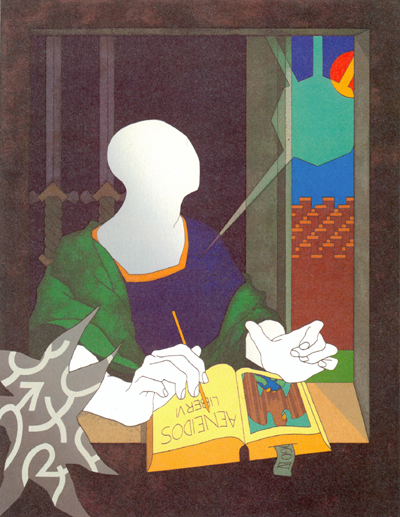
Clayton Chrusch, in response to Trevor Losh-Johnson:
First of all, thanks so much to Joe and Bob for extremely helpful responses.
Trevor, my master’s thesis was about the theory of symbols [Five Kinds of Freedom: Northrop Frye’s Theory of Symbols and Thich Nhat Hanh’s Old Path and White Clouds. McMaster University. 2002 ]
I have to admit the phases are difficult to distinguish. The descriptive phase is the odd one out, but the other phases can be thought of as expanding concentric spheres. In each one, the context of the poem is wider than in the previous. So in the literal phase, the context is simply the verbal structure of the poem itself, and the assumption of its criticism is the unity of the poem. In the formal phase, the context is the imaginative world constructed by the poem, and the assumption of the criticism is the unity of imagery. In the mythical phase, the context is the imaginative structure constructed by all of literature, and its assumption is the reality of such a structure (”the order of words”) and its relevance to the poem in question. In the anagogic phase, which I don’t really understand, I think the context is the infinite potential of the imaginative universe, and the assumption of anagogic phase criticism is that the poem is the expression of infinite creative human power. I’m probably wrong about anagogy, but I’m more certain about the others.
It seems to me that not much of interest happens at the literal phase that is not also part of higher phases. I’ve written an essay about grammar in Virginia Woolf’s writing that probably counts as literal phase criticism. I think of Gertrude Stein’s work but even that can be responded to at the level of imagery. So I would say interesting work on the poem as an imaginative unit all happens in the formal phase. Frye seems to want to associate the new critics with the literal phase but based on my reading of Cleanth Brooks, at least, they belong at the formal phase (or maybe both, but not the literal phase exclusively).
So I would say that if you are interested in the unity of imagery in The Faerie Queene without explicit reference to the use of that imagery in other poems, what you may need is a new critical reading.

Thanks to Clayton and Joe for your help. I had assumed that the literal phase corresponded to matters of grammar and verbal ambiguity, anaphora and such. What I have been wondering aloud may refer to how the literal and formal behave archetypally or anagogically within the frames of the text. If archetype is an image that refers to wider literary categories, I wonder what a single symbol that relates to a wider textual organization could be defined as. This would have implications to the mutations an archetype undergoes in the course of a work. In any case, I have feel that symbolisme goes beyond grammar.
And now for something completely different.
Clayton, I am interested by the title of your thesis- I had the luck of attending a Thich Nhat Hanh retreat in San Diego eight years back, and it was a powerful experience. People stopped bowing to each other when it ended, though.
Joe, in response to your mention of archetypes in tv shows (surely The Shield deserves note), I remembered I came across a close viewing of the final episode of The Sopranos some time back. It’s more of a persuasive effort, but it manages to cover just about every mode of Frye’s symbolic criticism, however well it does it. There is even an attempt at archetypes in the onion rings!
http://alessonaday.wordpress.com/2007/06/15/sopranos-finale-analysis-of-final-scene/
Hi Trevor, I also attended a retreat with TNH in 2002 and spent a couple weeks at his monastery outside San Diego in 2003 when I was recovering from grad school. I first read Old Path White Clouds, his account of the Buddha’s life, when I was about 15. I owe a lot to him.